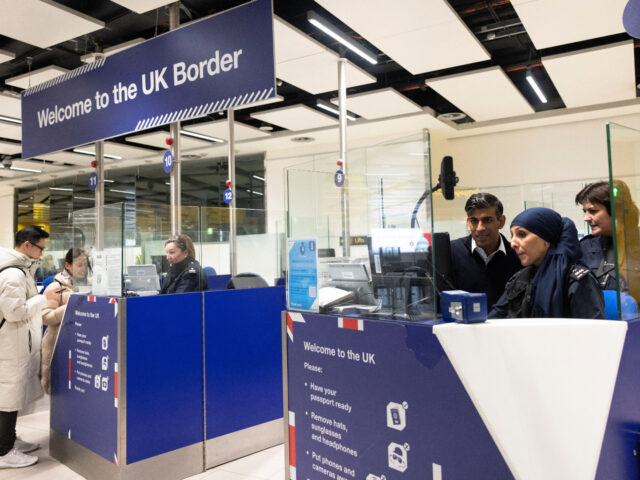The population of the United Kingdom rose by nearly seven per cent between 2011 and 2022 to an estimated 67.6 million, an increase of over four million people mostly as a result of the mass migration policies of the supposedly Conservative government.
Population figures released on Tuesday from the Office for National Statistics (ONS), the first snapshot of the country’s size since the 2021 Census, found that the population of the UK rose by 6.7 per cent to an estimated 67,596,281 people by mid-2022 from just a little over a decade prior in mid-2011.
England saw the largest increase of the four UK nations, jumping by 7.5 per cent over the time period, or an increase of four million people, the ONS said.
This was followed by a 5.3 per cent rise seen in Northern Ireland, equivalent to 96,225 people, Scotland with a 2.8 per cent increase (147,000 people), and a 2.2 per cent rise (67,882 people) seen in Wales.
The release of the data came after the ONS predicted that the population would reach 70 million people within the next two years and that the country is on pace to see a 10 per cent rise by 2036 to almost 74 million people.
The change was mostly driven by foreign migration as opposed to internal growth, with the birth rate having been below replacement levels and continually declining over the same time as the population rose.
While the Conservative Party had vowed to reduce migration following Brexit, the opposite has happened, with net migration hitting new highs in both of the past two years, over which time it hit a record 1.2 million.
Supporters of All Major Parties Want UK Government to Cut Immigration: Poll https://t.co/BSw8G6bhWc
— Breitbart London (@BreitbartLondon) February 22, 2024
Demonstrating the impacts of importing millions of foreigners into the country, a report from the Resolution Foundation this week found that housing is more expensive in the UK than in any other country within the OECD group of high-income countries, with British housing costing 57 per cent more than in Austria and 36 per cent higher than in Canada.
According to the real estate site AllAgents, the average price of a house adjusted for inflation in the UK rose from £130,499 in 1997 to £269,242 in 2022, an increase of 106 per cent. During the same time frame, average wages only increased by 16 per cent, effectively pricing out millions from getting onto the property ladder.
While the impact of migration on the housing market is often dismissed by political and media liberal elites, an analysis from investment bank Investec last year claimed that a quarter of a million new homes would need to be built to merely meet the demands of the previous year of net migration.
A report last week from the Centre for Cities think tank also warned that the growing migrant population in London — where much of the population growth is centred — will further strain social services such as the National Health Service (NHS).
Despite the economic ramifications placed on the middle and working classes by mass migration and a majority of the country wanting to reduce the influx of foreigners, the Conservative government does not appear to be interested in doing so, with the neo-liberal leadership in Downing Street often pointing to the vague notion that migration increases GDP and economic growth overall.
Although the Tories previously pledged to reduce net migration from “the hundreds of thousands to the tens of thousands” ahead of the 2010, 2015, and 2017 general elections. Yet, former Chancellor of the Exchequer and David Cameron henchman George Osborne later admitted that the party leadership never supported “the pledge in private and all would be glad to see the back of [it]” and that the party could have reduced non-EU-based immigration before Brexit but refused to do so.
Mass Migration Putting 'Unbearable' Strain on Housing Market, as Hundreds of Thousands of New Homes Needed to Meet Demand https://t.co/WMsP5aqqOx
— Breitbart London (@BreitbartLondon) May 29, 2023

COMMENTS
Please let us know if you're having issues with commenting.